In the lush and diverse landscapes of Southeast Asia, a remarkable creature takes flight under the cover of darkness. Meet the colugo, an extraordinary gliding mammal that defies conventional expectations with its unique adaptations and enchanting lifestyle. In this exploration, we delve into the distinctive characteristics and fascinating aspects of this elusive and acrobatic Southeast Asian glider.
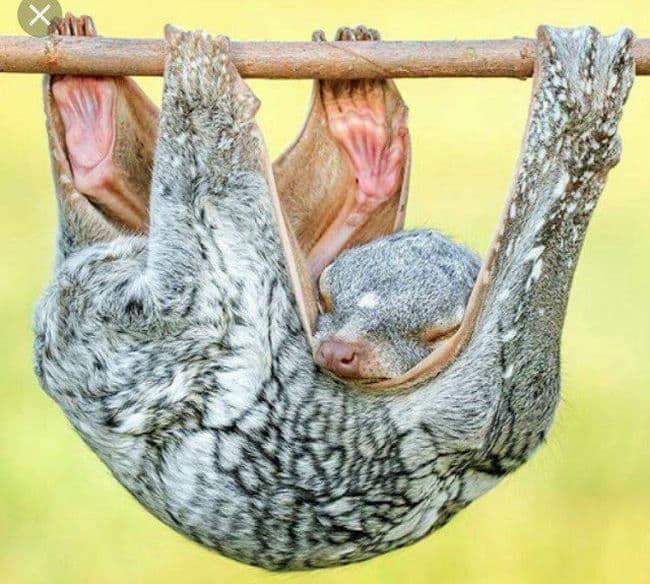
As the sun sets over the rainforests of Southeast Asia, the colugo, also known as the flying lemur, awakens to begin its nocturnal adventures. With its large, expressive eyes and patagium—a specialized membrane that allows for incredible gliding feats—the colugo emerges as a creature of the night, captivating observers with its graceful movements.
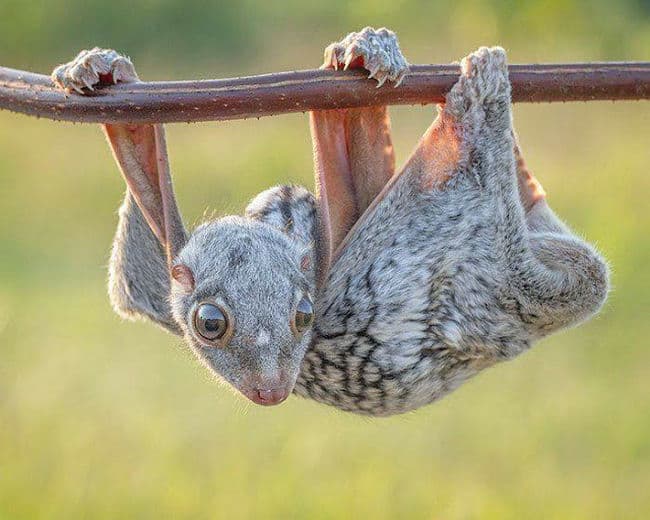
At the heart of the colugo’s exceptional gliding abilities lies its patagium, a membrane that extends from its neck down to the tips of its fingers and toes. This natural parachute allows the colugo to gracefully navigate between trees, covering distances of up to 200 feet in a single glide. The intricate design of the patagium showcases nature’s ingenuity in adapting to specific environments.
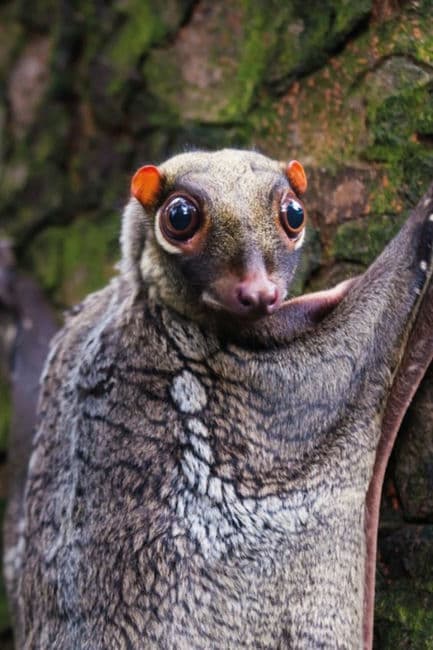
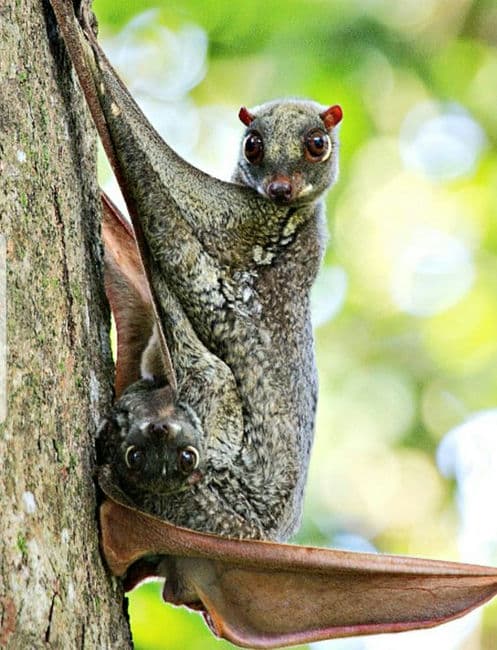
Witnessing a colugo in action is akin to observing a skilled aerial acrobat. Agile and precise, the glider effortlessly propels itself between branches, showcasing a mastery of controlled descents and turns. This mesmerizing display not only aids in efficient travel but also serves as a vital survival mechanism, allowing the colugo to access food sources and evade potential predators.
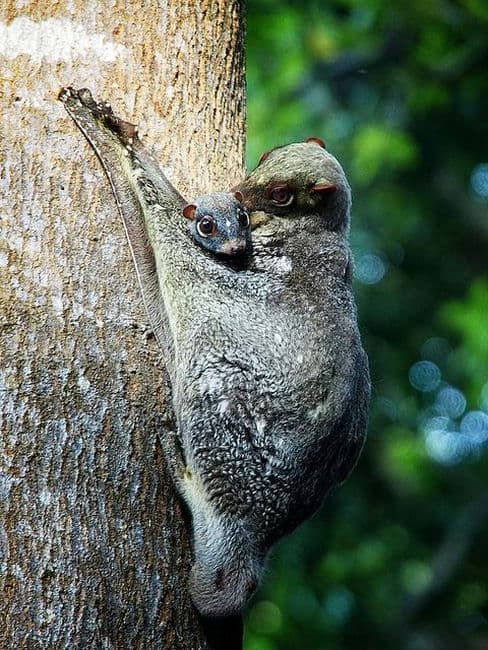
Despite being called a flying lemur, the colugo is not a lemur at all and is more closely related to primates. Primarily herbivorous, colugos feast on a diet of leaves, flowers, and sap. Their specialized dentition and digestive system are adapted to process the challenging components of their plant-based menu. The colugo’s nighttime forays are not only for sustenance but also for engaging in the complex social interactions that contribute to their species’ dynamics.
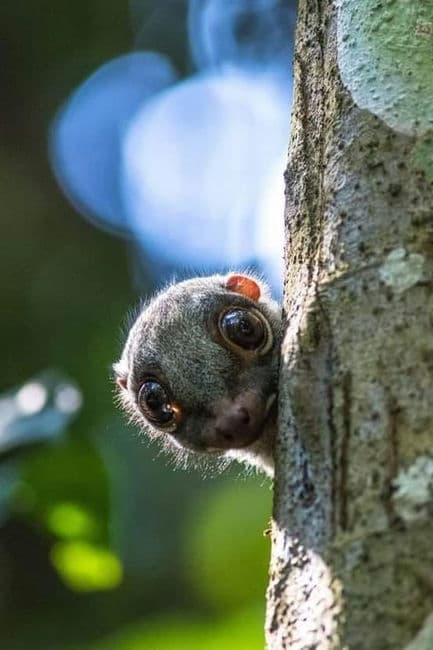
The colugo’s fur, often mottled in shades of brown, gray, or reddish-brown, serves as a natural camouflage amid the foliage. During the day, colugos nestle against tree trunks, rendering themselves nearly invisible to predators and human eyes alike. This cryptic behavior adds an extra layer of intrigue to the elusive nature of these Southeast Asian gliders.
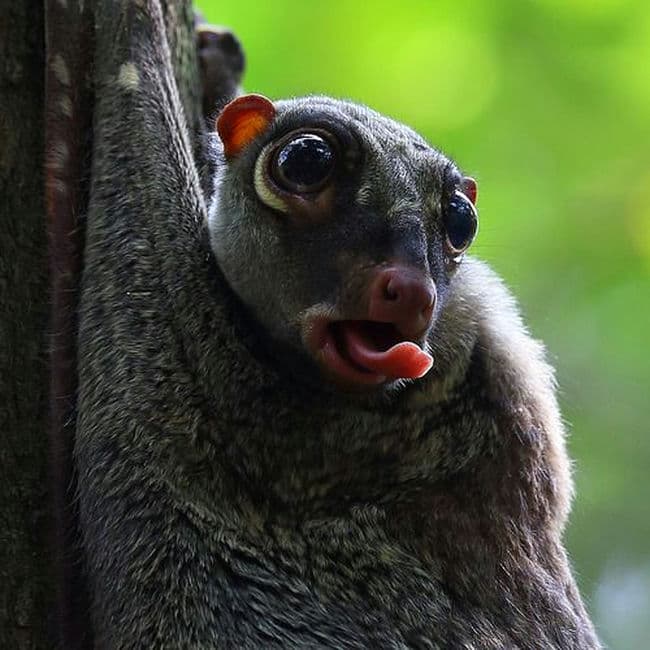
While the colugo has adapted remarkably to its environment, it faces conservation concerns due to habitat loss and fragmentation. Increasing awareness and understanding of these fascinating creatures play a crucial role in fostering conservation efforts. Appreciating the colugo’s unique role in the ecosystem encourages a collective commitment to preserving the biodiversity of Southeast Asian rainforests.
The colugo, with its patagium-assisted glides and cryptic lifestyle, remains a nighttime enigma in the rainforests of Southeast Asia. As we uncover the intricacies of its adaptations, the colugo becomes a symbol of nature’s marvels and the delicate balance that sustains the diverse ecosystems of the region.
Frequently Asked Questions:
- Q: How does the colugo’s patagium contribute to its gliding abilities?
- The patagium, a specialized membrane, allows the colugo to glide between trees with remarkable precision. It extends from its neck down to its fingertips and toes, acting as a natural parachute for controlled descents.
- Q: Are colugos related to lemurs?
- Despite the name “flying lemur,” colugos are not lemurs. They are more closely related to primates and are unique in their evolutionary lineage.
- Q: What is the primary diet of colugos?
- Colugos are primarily herbivorous, consuming leaves, flowers, and sap. Their specialized dentition and digestive system are adapted to process the challenging components of their plant-based diet.
- Q: How do colugos camouflage themselves during the day?
- Colugos have fur that is often mottled in shades of brown, gray, or reddish-brown, providing natural camouflage against tree bark. During the day, they nestle against tree trunks, making them nearly invisible to predators.
- Q: What conservation challenges do colugos face, and how can awareness contribute to their preservation?
- Colugos face conservation concerns primarily due to habitat loss and fragmentation. Increasing awareness about these creatures and their unique role in the ecosystem is crucial for fostering conservation efforts and preserving the biodiversity of Southeast Asian rainforests.

